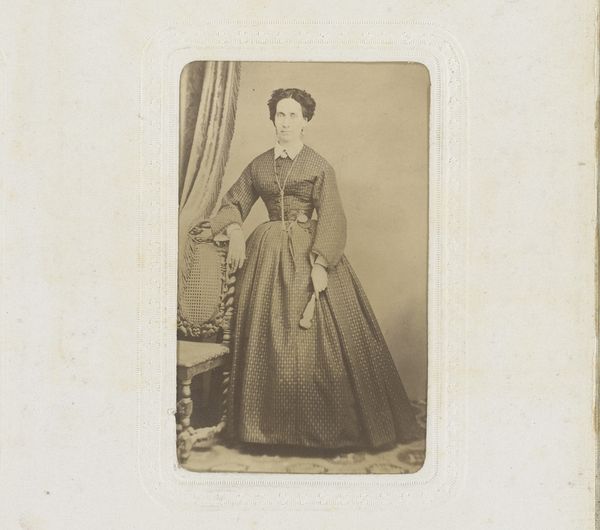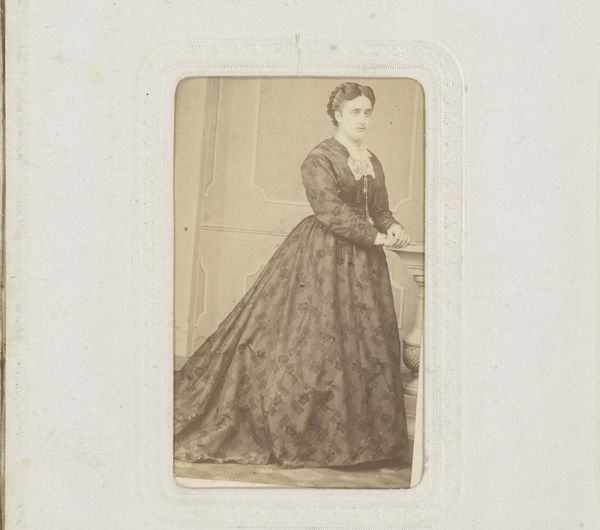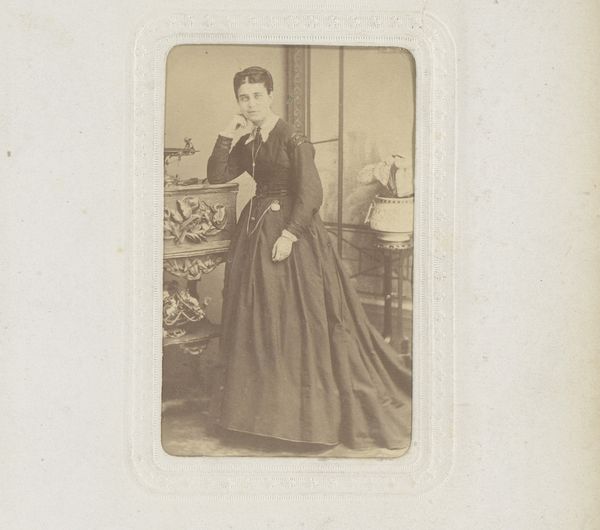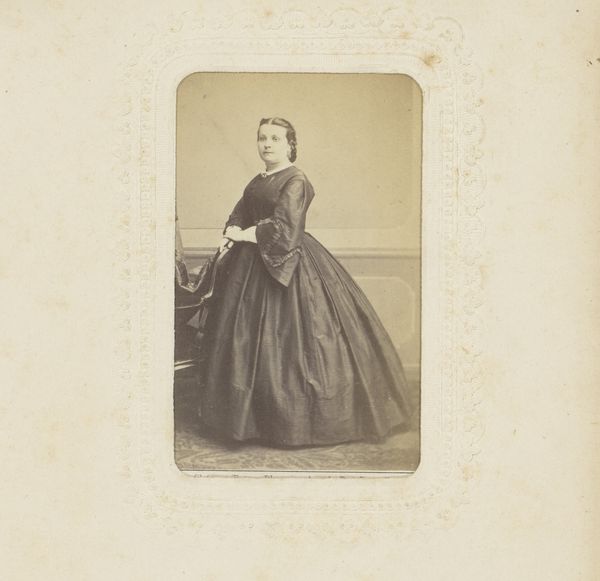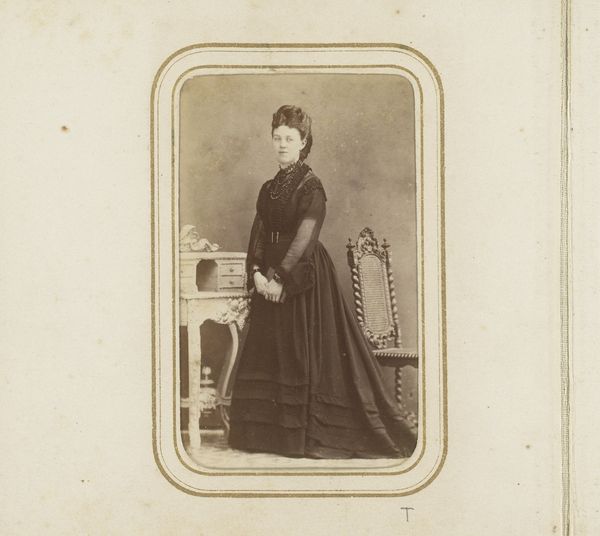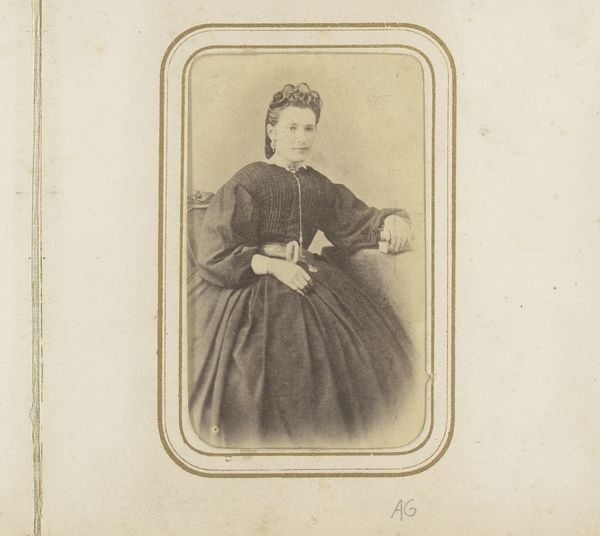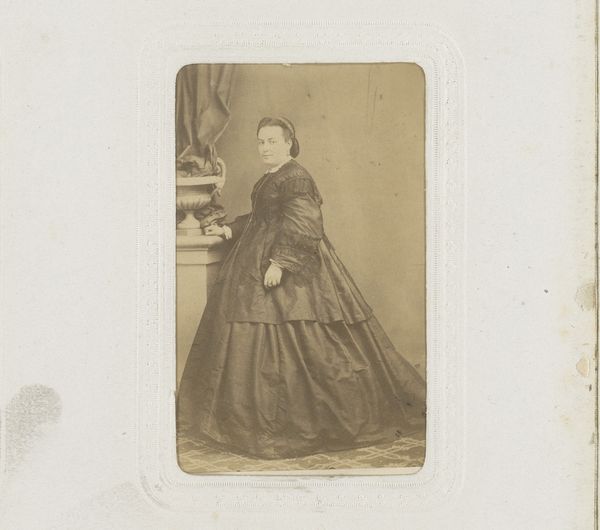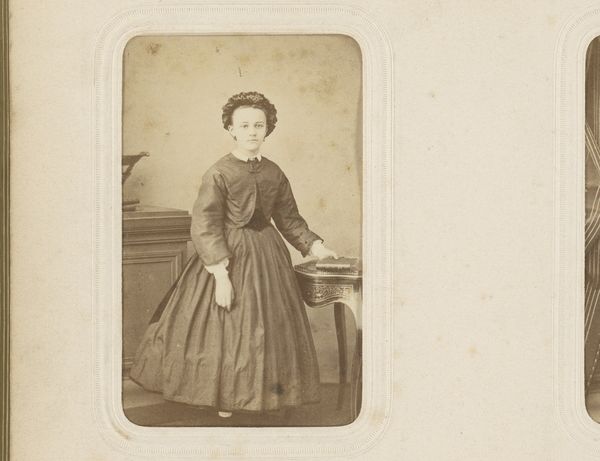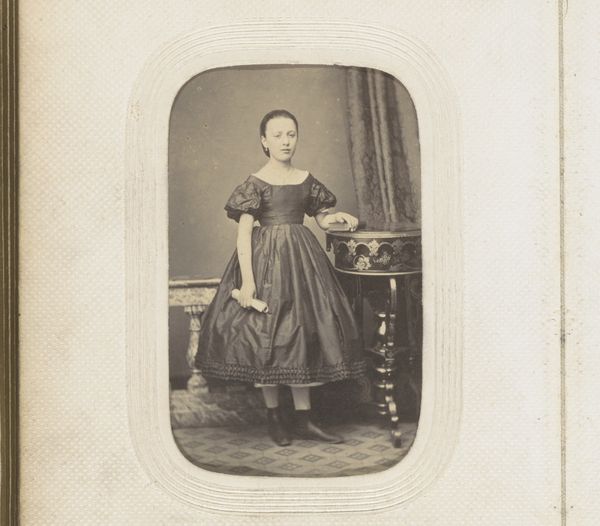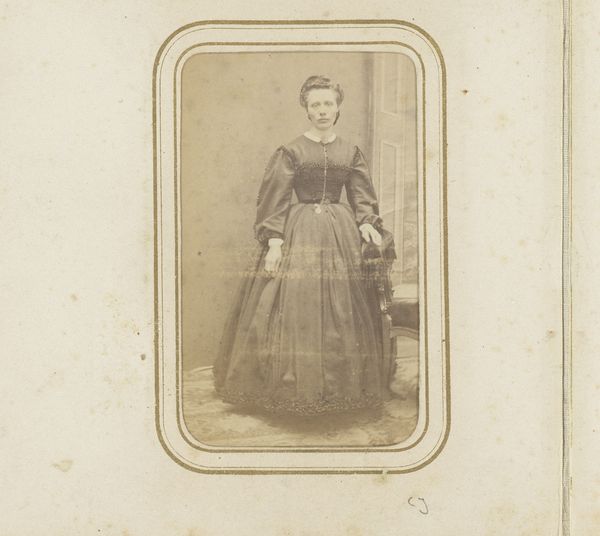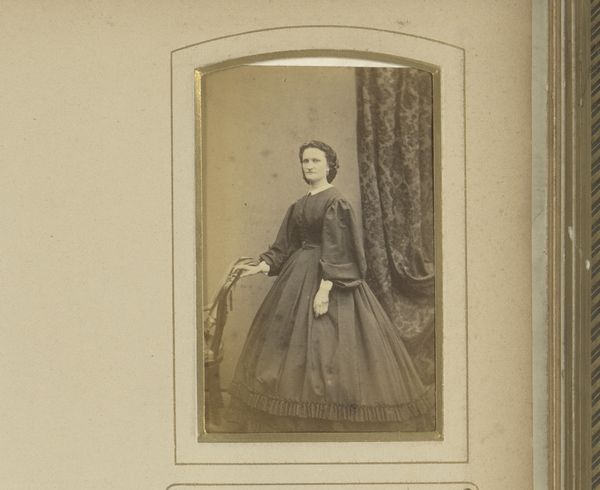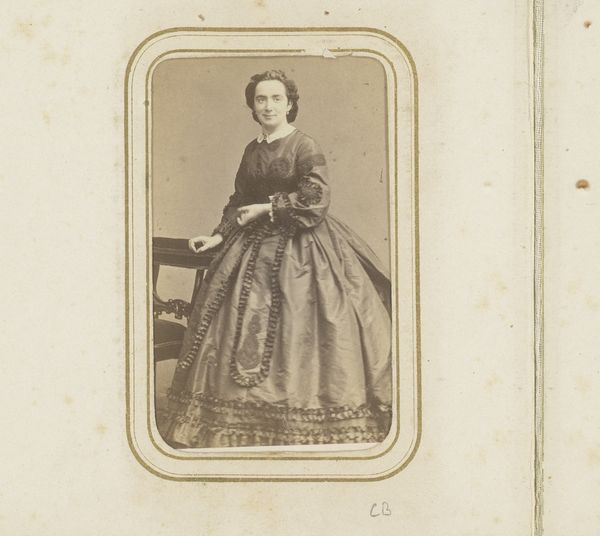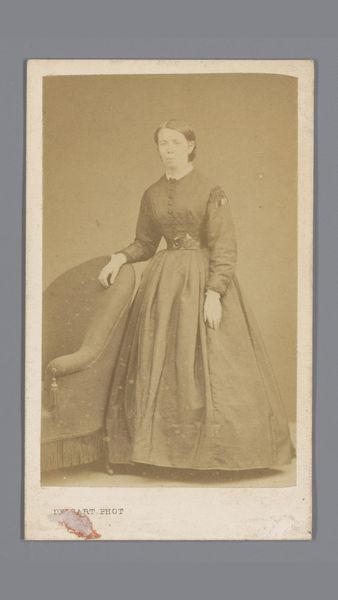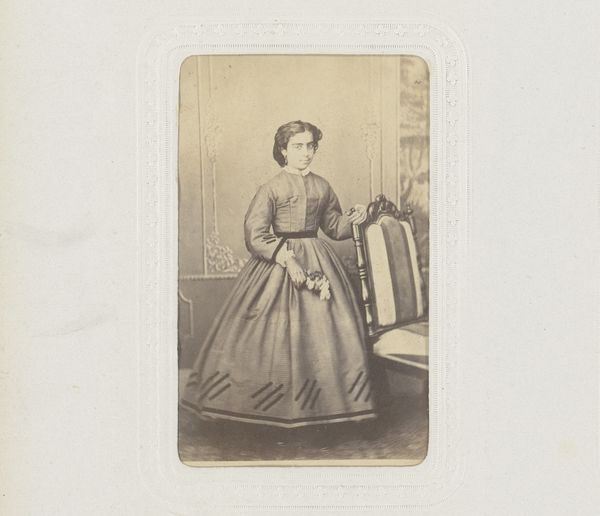
photography, gelatin-silver-print
#
archive photography
#
photography
#
historical photography
#
gelatin-silver-print
#
19th century
#
academic-art
Dimensions: height 101 mm, width 61 mm
Copyright: Rijks Museum: Open Domain
Curator: My first impression is quiet observation. There's a stillness that pervades the image, a held breath. Editor: I agree. And that quality feels particularly potent when viewing "Portret van een jonge vrouw", a gelatin-silver print made somewhere between 1860 and 1900 by Witz et Cie. This portrait embodies the sensibilities of 19th-century academic art. What aspects of the image contribute to your sense of stillness? Curator: Her pose is carefully managed: the languid hand on the balustrade, the direct, yet reserved gaze. There’s something in the composition and her demeanor that reflects not just the conventions of portraiture at the time, but deeper aspirations towards social and moral uprightness. Editor: Certainly. Think of the burgeoning middle classes and their desires to reflect societal norms, to assert themselves respectably into a shifting social landscape. Photography served as a readily available means of portraying this aspiration and conveying specific meanings tied to social status. What reads as significant here? Curator: Well, her dress is a dark color, but the slight sheen and fullness signal quality material. The head wreath of flowers also speaks, referencing classical ideas of virtue and beauty, perhaps, and fleeting youth, like Ophelia of Shakespeare’s “Hamlet,” a symbol deeply entrenched in the Victorian era. Yet it feels almost performative, too controlled to be truly intimate. Editor: Absolutely, it's constructed imagery intended for public consumption and projecting certain ideals about gender and class. What do you think an audience would read from this controlled appearance? Curator: In the details lies the symbolic intent. White gloves and floral crown serve to emphasize feminine innocence, a highly sought ideal at this moment in time. She becomes both an individual and an emblem, reflecting not just her likeness, but her family’s aspirations and their understanding of proper femininity. She stands for order. Editor: And now, peering through time, what interpretations or feelings endure for you when viewing her? Curator: Despite the calculated composition, her face seems on the cusp of an unknowable expression, caught between presentation and individuality. Her gaze is so direct, I wonder at her story. It reminds us that photographic portraits are only ever partial, fleeting glimpses. Editor: And that even the stillest image can suggest depths, stirring curiosity and, ultimately, a reminder of the chasm between our contemporary views and those that this image was intended to initially uphold.
Comments
No comments
Be the first to comment and join the conversation on the ultimate creative platform.
